Financial Analysis Management And Enterprise Assignment
Added on 2021-02-19
23 Pages4248 Words199 Views
Financial analysismanagement andenterprise
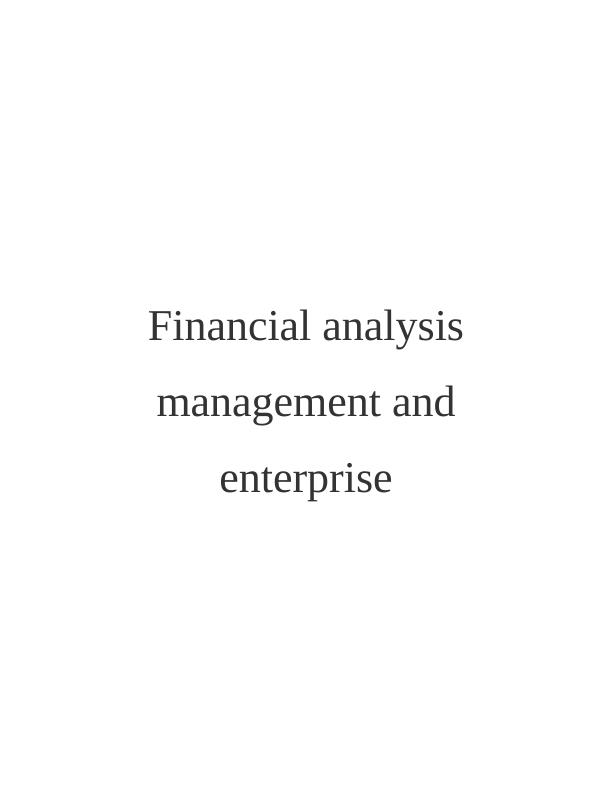
Table of ContentsINTRODUCTION...........................................................................................................................1Ratio Analysis..................................................................................................................................1Liquidity ratios: ...........................................................................................................................1Turnover ratios: ..........................................................................................................................4Profitability ratios: ......................................................................................................................6Analysis of working capital position.............................................................................................13Interpretation of cash flow statement.............................................................................................14CONCLUSION..............................................................................................................................15REFERENCES .............................................................................................................................16APPENDIX....................................................................................................................................17
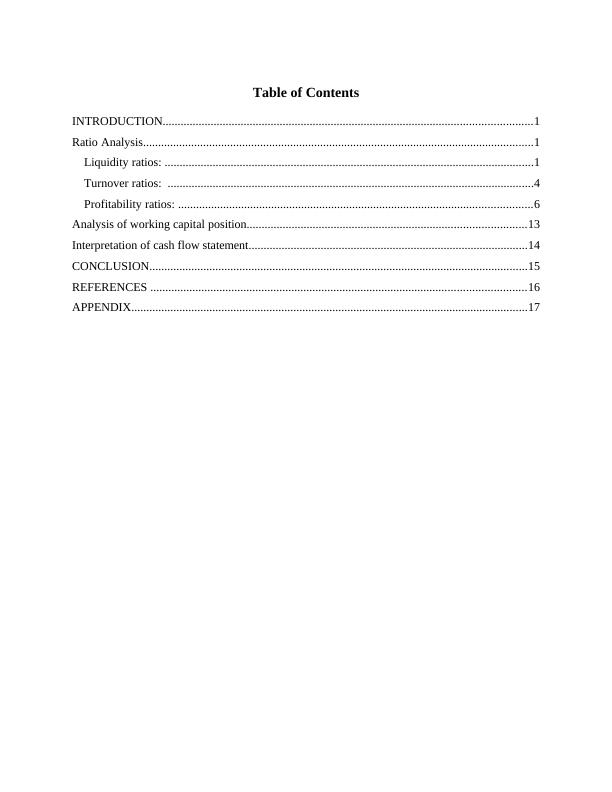
INTRODUCTIONFinancial analysis management plays a crucial role in determining profitability andliquidity state of a company. In a broader sense, financial performance refers to a degree whichhelp organisations to measure their cash flow position by diversifying the transactions intooperating, financing and investing activity. Also, in order to obtain an accurate picture offinancial stability of a company, ratio analysis is considered to be the best technique. For thisreport, a large Asian food manufacturer is chosen i.e. Nestle who has two major clients which areSainsbury's and Tesco. They both are large supermarkets based in London, UK and offer a widerange of products & services to the customers under a single roof. The following reporthighlights on a vertical, horizontal ratio analysis for both the organisations, importance ofworking capital management. Also, a detailed analysis of cash flow position of the companiesare also included under this report (Brustbauer, 2016). Ratio AnalysisRatio analysis refers to a technique of comparing the line items in financial statements ofa company. It has a broader aspect and covers a variety of ratios like liquidity, profitability,efficiency, turnover etc. Some of them are mentioned below in reference with Sainsbury's andTesco. Liquidity ratios:This ratio tells how fast a firm can convert its current assets into cash so that it can easilypay off the liabilities (Crowther, 2018). It is a short-term liquidity ratio which affects thecredibility of a company in paying off its debts. Two ratios are included under this category i.e.current and quick. Current ratio: It measures the financial strength of a company and its ability to pay offthe debts. Generally, an ideal current ratio is assumed to be 2:1 which reflects that a firm shouldhave twice of its assets than liabilities.Formula: Current assets/current liabilitiesCurrent ratioSainsbury'sTesco2015-160.660.752016-170.740.792017-180.760.711
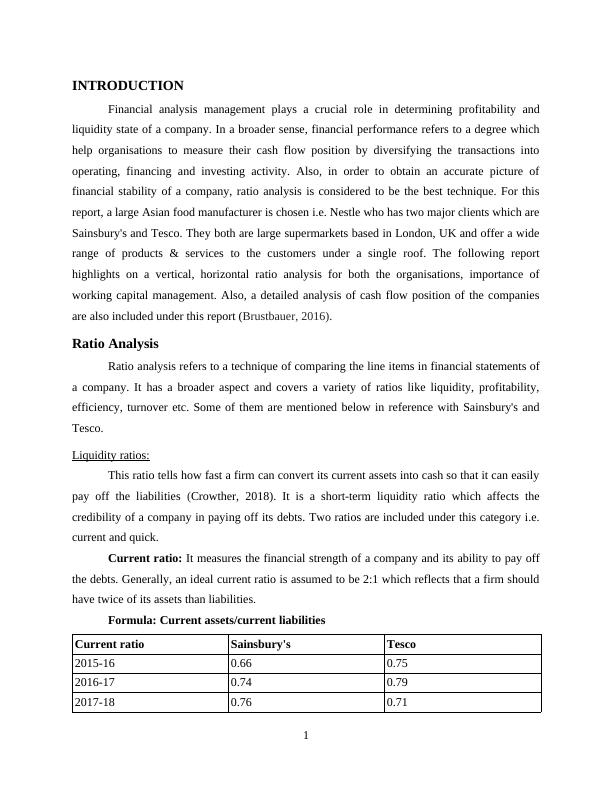
2018-190.660.61Sainsbury'sTesco00.10.20.30.40.50.60.70.80.90.660.750.740.790.760.710.660.61Current ratio2015-162016-172017-182018-19Interpretation: The current ratio for Sainsbury's in both the years 2015-16, 2018-19 isstabilized by 0.66 which states that the company's liquidity position in proportion to currentassets and liabilities has not improved during the years. The current ratio for Tesco in the year2015-16 is 0.58 and in 2018-19 is 0.61 which states that the organisation has not improved to alarge extent and it needs to work on its assets and concentrate on paying off its dues so that theliquidity position remains balanced. This also indicates that both companies should tighten theircredit period offered to debtors in order to receive the payment faster. Also, it is advised thatSainsbury's should raise more shares and debentures so that level of cash generated is enough topay off the dues. But, still the current ratio is less than the ideal comparison which is consideredto be 2:1 that implies both companies are having difficulties in paying off the debts andSainsbury's & Tesco should consider increasing their current assets in order to dispose off theliability.Quick ratio: Also known as acid test or liquid ratio, this is the best way to measure theliquidity of a firm. A portion of inventories and prepaid expenses are deducted from thenumerator in order to obtain quick assets. Generally, an ideal acid test ratio is considered to be1:1. 2
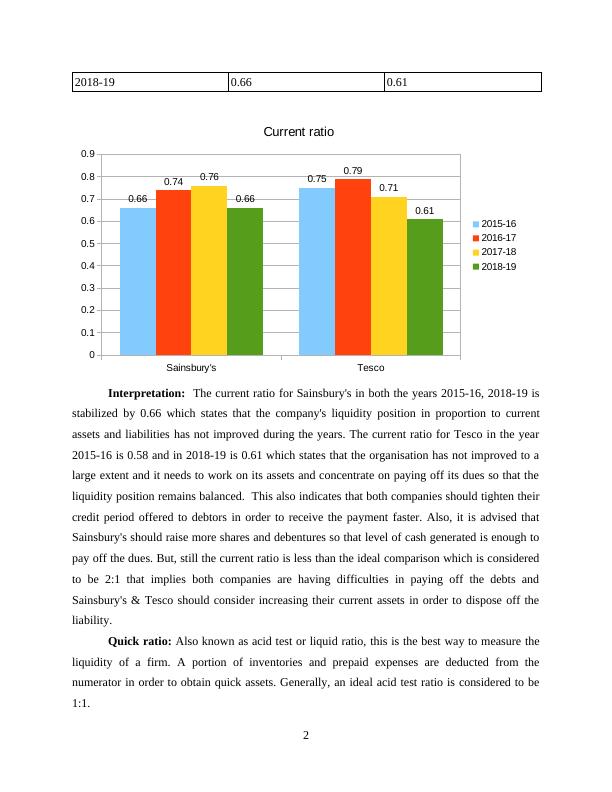
Formula: Quick assets/current liabilitiesQuick ratioSainsbury'sTesco2015-160.520.632016-170.530.682017-180.590.62018-190.490.48Sainsbury'sTesco00.10.20.30.40.50.60.70.80.520.630.530.680.590.60.490.48Quick ratio2015-162016-172017-182018-19Interpretation: The quick ratio for Sainsbury's in the year 2015-16 is 0.52 whichdeclined in 2018-19 to 0.49 which states that the company is not able to manage its liquid assetswhich in turn affects the liquidity position of the firm. However, the acid test ratio for Tesco in2015-16 is 0.63 which also diminished in the year 2018-19 to 0.48 which also explains the dis-proportion between current assets and liabilities apportioned in the balance sheet. This showsthat the company is not performing well in paying off the liabilities before time which suggestsTesco's liquidity position is falling down and is not able to generate cash for the purpose ofmanaging expenses incurred with the year. It implies that both companies have failed to managetheir quick assets in comparison with current liabilities since both are declining. Although, boththe ratios in current as well as previous year are close to industry average, but still less than the3

ideal ratio which is considered to be 1:1. It implies that Sainsbury's and Tesco should considerinvesting in a bank account or other securities in order to raise their liquid assets. Working notes:Current ratio(Sainsbury's)2015-162016-172017-182018-19Current assets4444632278667589Current liabilities672485731030211417Current ratio(Tesco)2015-162016-172017-182018-19Current assets14828154171372612688Current liabilities19714194051923820680Quick ratio(Sainsbury's)2015-162016-172017-182018-19Quick assets3508347645476056Current liabilities672485731030211417Quick ratio(Tesco)2015-162016-172017-182018-19Quick assets9001123981311611463Current liabilities19714194051923820680Turnover ratios:These ratios are used to check efficiency of a company that how it uses assets to earnprofit (Farrell and Gallagher, 2015). It includes a wide range of ratios like, capital employed,total asset, inventory & payable turnover etc. Inventory turnover ratio: It is also refereed to as stock turnover which is used tomeasure number of sales generated from its inventory and how well a company is using it.Formula: Inventory/cost of sales*3654
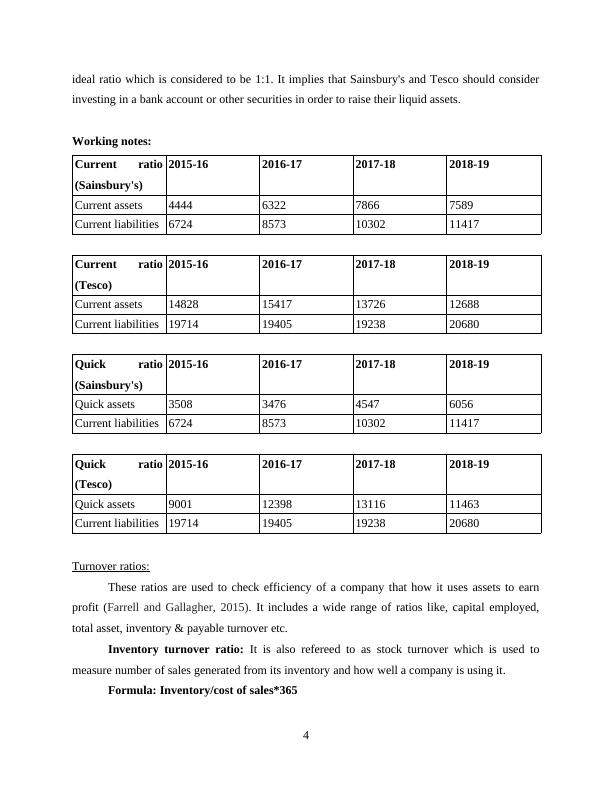
End of preview
Want to access all the pages? Upload your documents or become a member.
Related Documents
Financial Analysis of Tesco Plc and Valuation Methodslg...
|14
|2630
|3
Managerial Finance: Financial Ratios, Performance Analysis, and Recommendationslg...
|18
|3418
|69
Managerial Finance Portfolio: Calculation of Ratios and Assessment of Financial Performancelg...
|23
|3962
|24
Analysis of Financial Performance and Position of Sainsbury and Tescolg...
|15
|3771
|94
Financial Analysis of Sainsbury and Tescolg...
|14
|3777
|26
Financial Analysis of Sainsbury and Tescolg...
|14
|3768
|47
